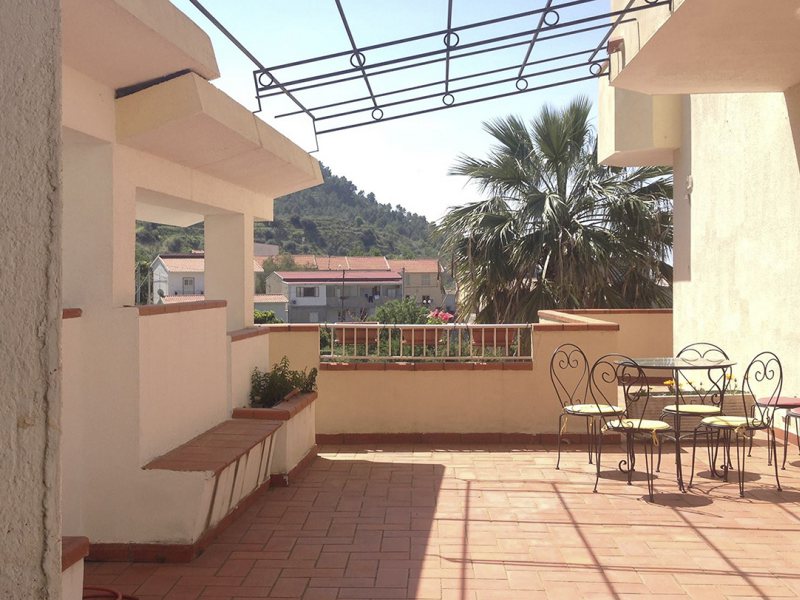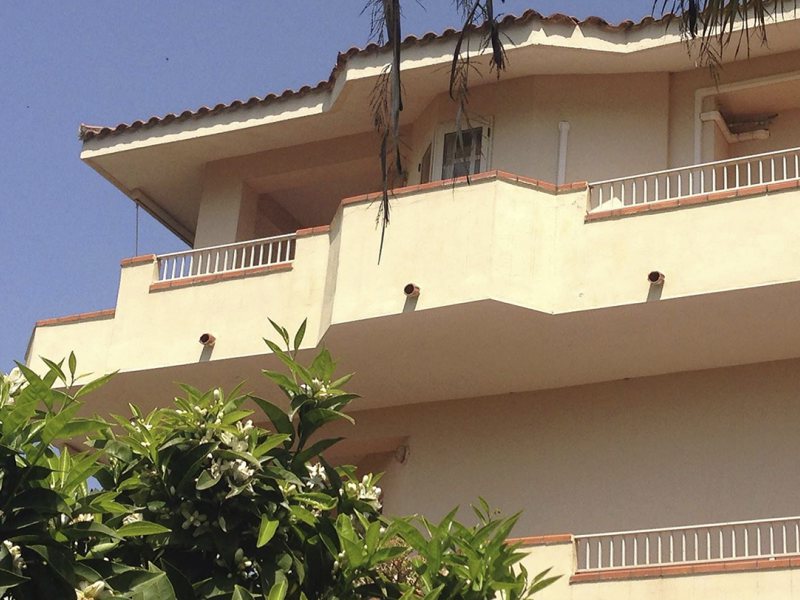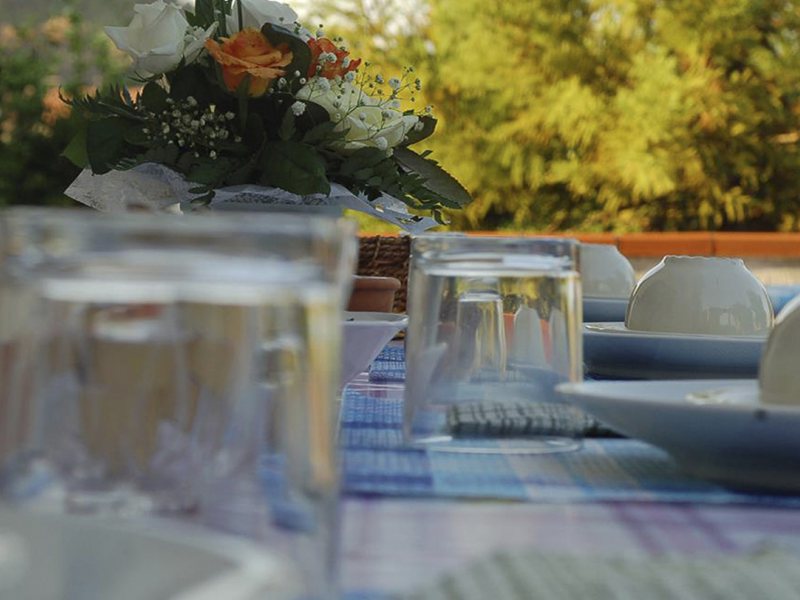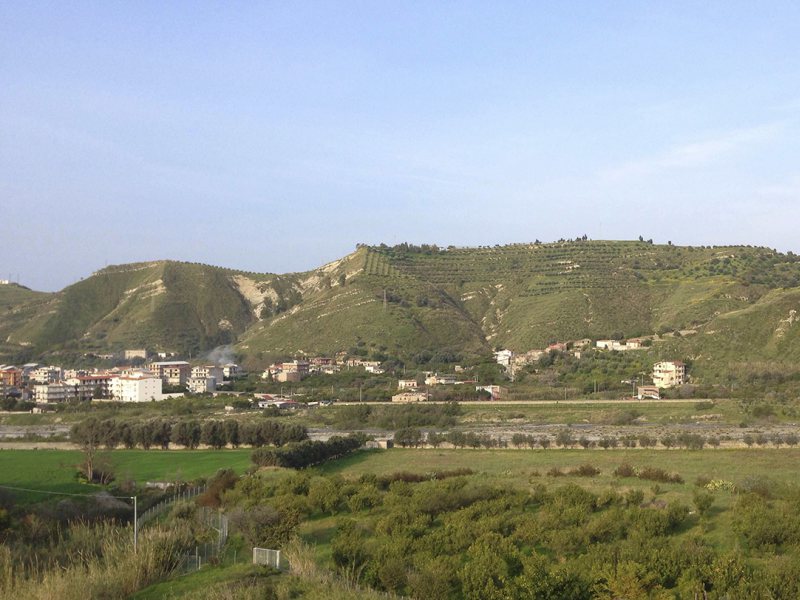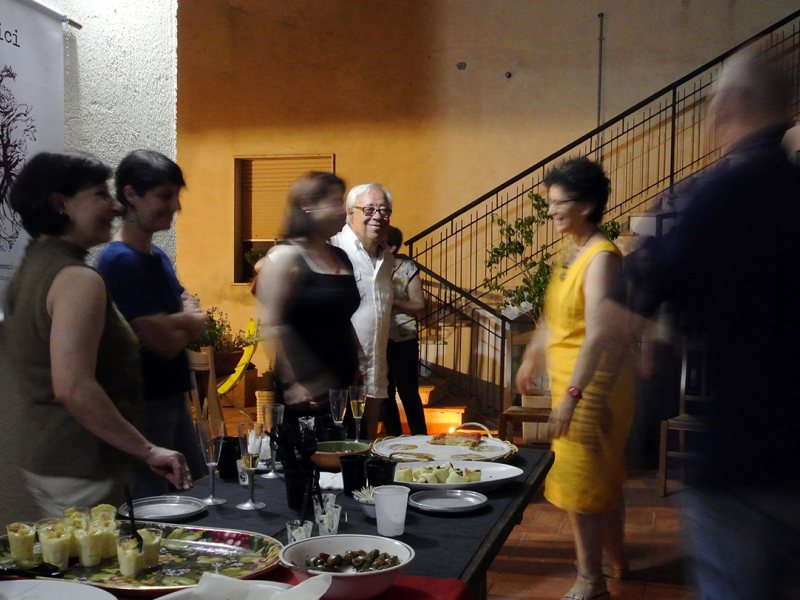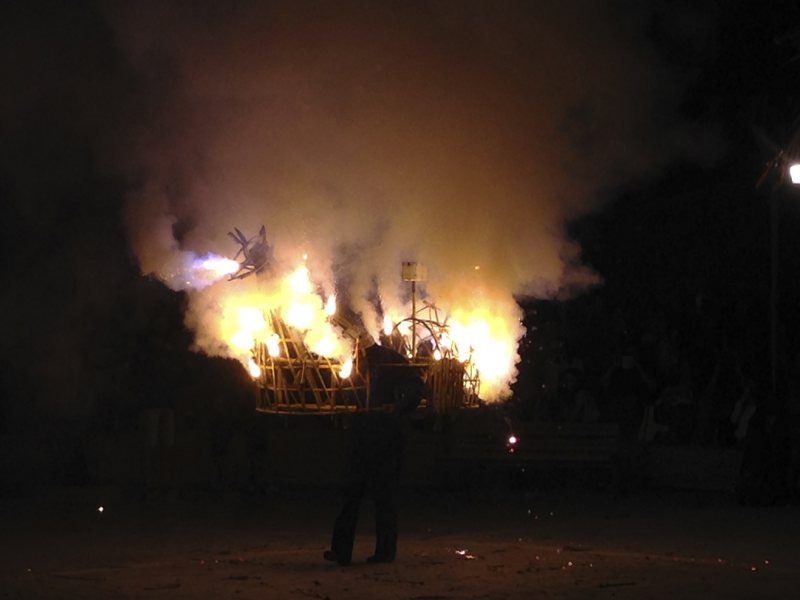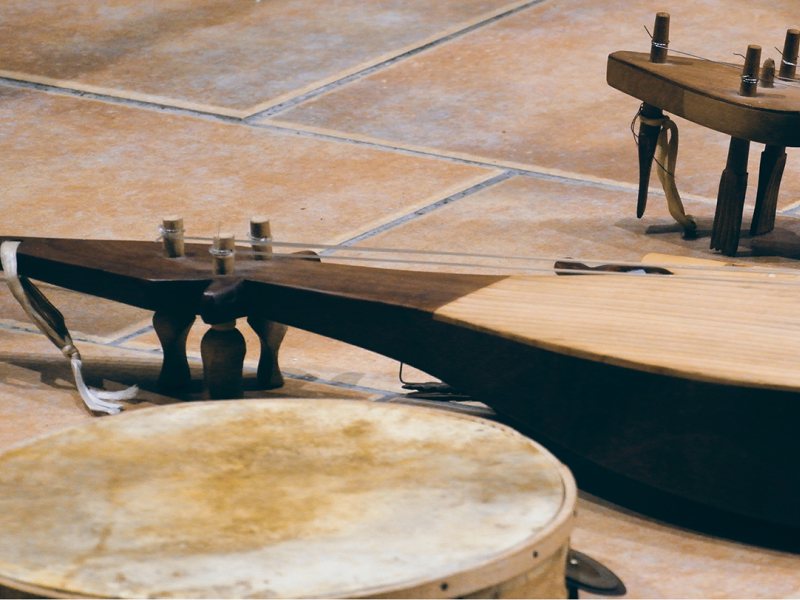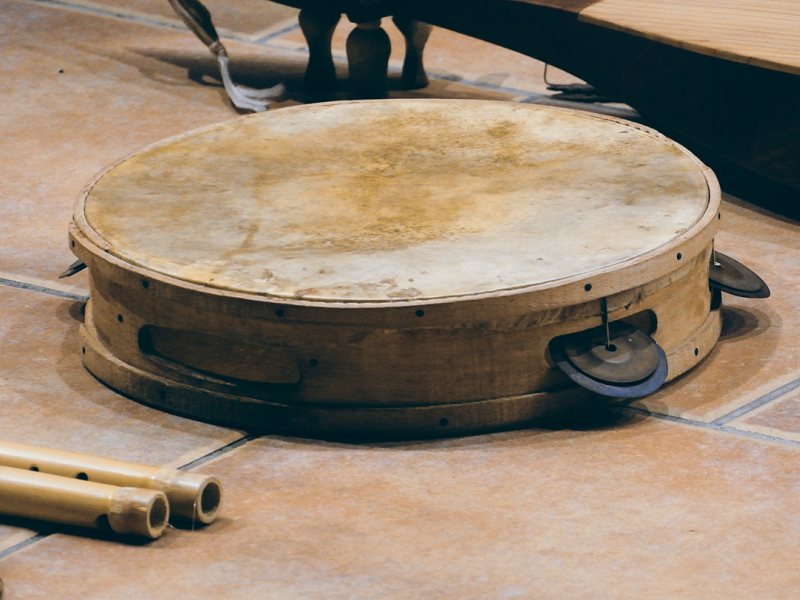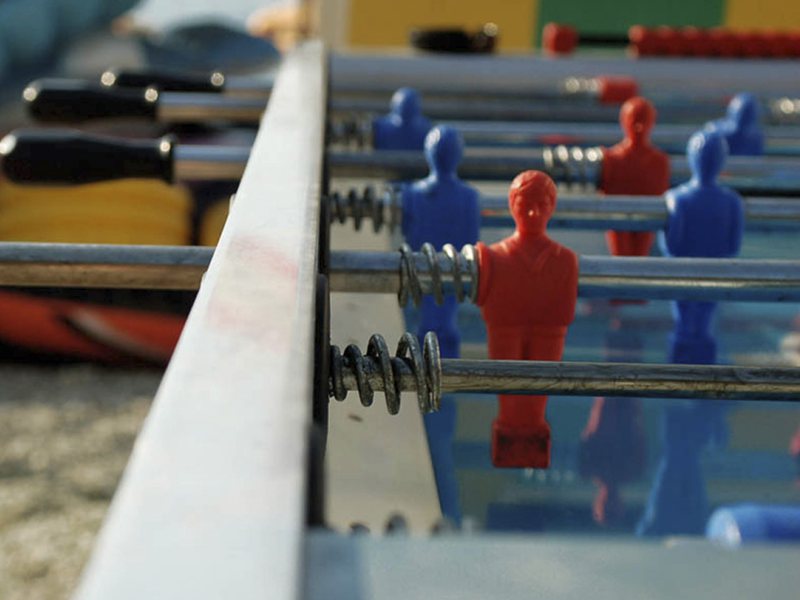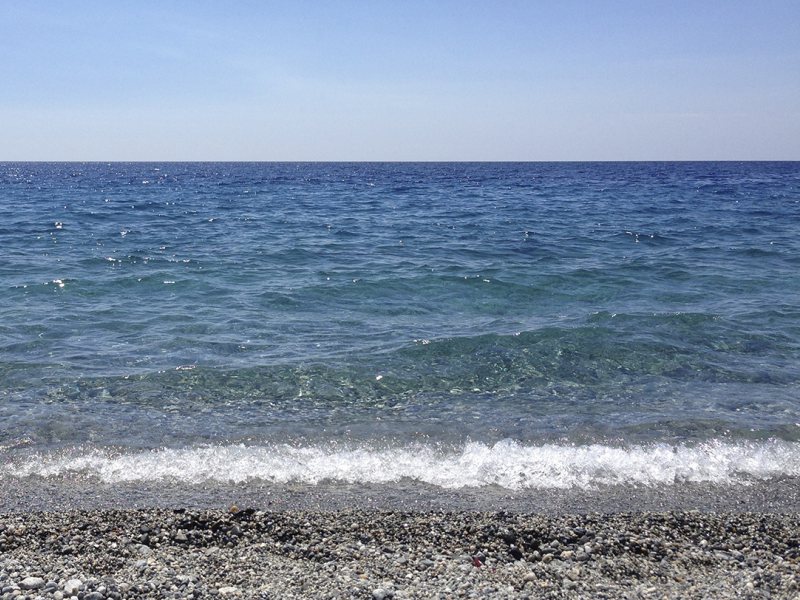Il Gelsomino B&B
Disponibilita Camere
Children and Extra
Camere
-
Max:
Servizi Camera: Conditioned Air, Internet, Televisione
Camera doppia con possibilità di inserire un terzo posto letto. Camera con bagno privato.Le camere del B&B “Il Gelsomino” si trovano al piano primo e secondo della villa, sono confortevoli e hanno finiture di pregio (parquet, cotto fiorentino…).Camera dotata di terrazzo privato.





-
Max:
Servizi Camera: Conditioned Air, Internet, Televisione
Camera doppia con possibilità di inserire un terzo posto letto.Le camere del B&B “Il Gelsomino” si trovano al piano primo e secondo della villa, sono confortevoli e hanno finiture di pregio (parquet, cotto fiorentino…).Camera dotata di terrazzo privato.





General Info
Il Gelsomino is in Prunella, a townland of the municipality of Melito di Porto Salvo, a quiet spot, away from the city, a place where comfort and relaxation harmonise perfectly.
The facility is a recently-built villa, in the green countryside overlooking the Tuccio Valley, only 2 kilometres from both the sea and the mountains, well connected to the Aeroporto dello Stretto [The Airport of the Straits] and 30 kilometres from Reggio Calabria, in the heart of the Graecanic Area.
Our B&B provides single, double ensuite, and double rooms sharing bathrooms, with the option of adding an extra bed. The rooms are large, bright, each one with its own little terrace and an independent air conditioning/heating system. Breakfast is served in a large sitting-dining area, with sofas and TV. When the weather is fine, the terraces become the favourite common area. Our breakfasts provide a wide range of options: bread, cakes and homemade jams, local salami and cheeses, croissants, juices and seasonal fruit. We also offer a safe parking place, subject to availability.
We also rent independent apartments, with air conditioning/heating and bathroom, and the use of the kitchen, on request.
Il Gelsomino collaborates with the territory’s promotional associations and groups, in particular the Associazione Radici [lit. Roots Association].
We like spending time with our guests and are used to organising dinners based on typical products, to introduce them to the flavours of our area. These dinners are scheduled so booking is mandatory and only for a limited number of guests.
By consulting us, you may enjoy a different Calabria, one made of excursions to ancestral places, full of tradition and unique flavours.
Our priority is, above all, to guarantee your comfort and safety. If a warm-hearted atmosphere and competitive prices are what you seek, Il Gelsomino is the right choice!
Discount is available for group bookings and for those staying for a certain length of time.
Service provided
Choice between double and twin beds
Cots for babies
High standard rooms with private bathroom
Breakfast included
A kitchen to prepare breakfast and a refrigerator to store food.
Air conditioning
Television
Large terraces
Parking places
Locality
Prunella is a small hamlet with about 800 inhabitants and is part of the municipality of Melito di Porto Salvo, in the province of Reggio Calabria. Once, the hamlet was part of the municipality of San Lorenzo, along with that of San Pantaleone (San PantaLeo) and San Lorenzo Marina (SartoLaVecchia). During the second post-war period , given its closeness, it was annexed to the municipality di Melito di Porto Salvo.
The name. The etymology of the name is uncertain, but it seems to come from the vast Prune [plum tree] plantations, that once abounded in the area.
The hamlet is divided into three sectors: Prunella Superiore (Supra Casi– upper houses), Prunella Media (Menzu Casi – central houses) and Prunella Inferiore (Jusi Casi- lower houses).
Prunella Superiore (Supra Casi), the largest of the three, faces north and stands further uphill than the other two; its most important building is the Church dedicated to San Giovanni Battista [Saint John the Baptist].
Prunella Media (Menzu Casi) occupies the central part of the hamlet; its most important place of worship is the Church of l’Addolorata [Our Lady of Sorrows].
Prunella Inferiore (Jusi Casi) is composed of very few buildings, mostly council-type housing; it faces south and stands on a small central square.
Feast days and events. On the 24th of June, Prunella celebrates the feast day of its patron saint, John the Baptist [San Giovanni Battista]. The procession, held in the afternoon, follows the statue of the Baptist, with a lamb in his arms, through the hamlet to return in the evening to the church named after the saint. In the evening the lay festivities take place, usually in the square in front of the church, and they feature various folk groups and youth bands, while the streets of the hamlet are lined with stalls selling all kinds of merchandise.
In the month of August the Festa dell’Emigrato [the Emigrant’s festivity] is held, to recall all the people from the hamlet who emigrated to Northern Italy, Europe and the Americas in the past. Recently, the fête of the Crispella [where crispellas– fried dough, sprinkled with either sugar or salt- are distributed free], has been added to this festivity. During this period the hamlet is enlivened by open-air games and musical shows of all kinds.
On the last Sunday of September the feast day of the Addolorata is celebrated. The procession winds through the little streets of Prunella and ends towards evening, when the square in front of the Church of the Addolorata, in Prunella Media, fills with people awaiting the arrival of the float carrying Our Lady of Sorrows back to her church.
On the occasion of the feativities held during the year Prunella alone performs the Ballu du Camiddhu [dance of the Camel]. A structure is made from swamp cane, once shaped like a camel, more recently like a donkey, [in dialect, sceccu, so that in more recent times this dance is now known as U Ballu du Sceccu also practiced in other parts of the province, having imported it from here]. Fire crackers and fireworks, are lit at the beginning of the performance and the camiddhu is “danced” slowly to the rhythm of the tarantella by a person hidden inside the “donkey” while the fireworks illuminate the people who come to watch the display. The end of the dance is announced by the camiddhu itself, which, having had firecrackers burst from various areas of its body, allows them explode in rapid succession from its swiftly whirling “tail”. Today, this occasion of collective celebration is entrusted to the young people of Prunella. The purpose of the Ballu du Camiddhu is to exorcise evil and recall the expulsion of the Turkish invader from Calabria, after centuries of domination, which had impoverished the local population. The camel stands for the Turks and its “death” by fire during the dance, symbolises their definitive defeat and expulsion from Calabria.
Le ninnarelle natalizie prunellesi. [Prunella’s Christmastide carols] Just before Christmas, between the 16th and 24th of December, by local tradition, children from the hamlet go from house to house in the early afternoon chanting the Novena [nine days] songs or Christmas Carols these are 9 traditional Christmas chants, sung in dialect that have been handed down through several generations. The lyrics change every day, and usually tell the story of the birth of the Child Jesus, but availing of simple words and expressions, like those of a humble shepherd. The singing is accompanied by the sound of a circu [circle] a wooden oval or round frame; the frame is wide to so that it may be easily held. Inside it contains one or more rows of little bells [usually those used when grazing sheep] held by a wire stretched across the frame. In the past, the number of bells indicated the social status of the child’s family. To play the circu the child shakes the wooden frame, making the bells jingle while he/she sings. On the last day of the Novena, the 24th December, the circu is festooned with coloured ribbons all around the frame. This continues so as not to lose or forget the local traditions, especially those associated with Christmas.
The bergamot. Prunella has been producing, for about 80 years now, a considerable amount of the Reggio-Calabria area’s “Green Gold” , that is, bergamot. The plantations of the so-called lord’s pear [from the Turkish beg armudi ] are vast and prosperous. The juice of the bergamot is used mostly in the world’s cosmetics industry, while its essential oil is used to make some of the best perfumes we know. The area is characterised by a microclimate classed as “temperate humid tropical ” with medium to strong winds that blow all year round, warm rainless summers, heavy rain in early spring and late autumn, and mild winters with daily temperatures always above ten degrees Celsius. On average, there is sunshine 300 days a year. The bergamot comes in three cultivar varieties: femminello, castagnaro and fantastico. The difference lies, above all, in the fruit. The femminello [female] has the best yield, but the single pieces of fruit have a smooth skin and are smaller than those of the other two cultivars; the castagnaro [chestnut-like] is big and tough , its fruit larger, its skin rugged, the fantastico [fantastic] is like the femminello only its fruit is pear-shaped.
Check-in
10:00 am
Check-out
10:00 am
Methods of payment
Bank transfer or cash
Prices pp: minimum €20, maximum €35
Prices, per double room: minimum €45, maximum.€70
Note: children between the ages of four and seven pay €15 a day while children under the age of four are free.
The prices are perperson and include breakfast, TV, daily cleaning of bedrooms and bathrooms, ample terraces, the supervised covered and open-air parking places available
Check-in
Check-out
Accepted payments
Prezzi a persona: min. euro 20, max. euro 35
Prezzi doppia: min. euro 45, max. euro 70
Nota: i bambini da quattro a sette anni pagano 15 euro al giorno, i bambini al di sotto dei tre anni non pagano.
I prezzi indicati sono riferiti ad ogni singolo ospite, includono colazione, tv, pulizia giornaliera di camere e servizi, ampi terrazzi. Vi è inoltre possibilità di parcheggio coperto o scoperto custodito. I bambini fino a sette anni usufruiscono di uno sconto del 20%.
Servizi
 Conditioned Air
Conditioned Air Parking
Parking Televisione
Televisione
Melito Porto Salvo
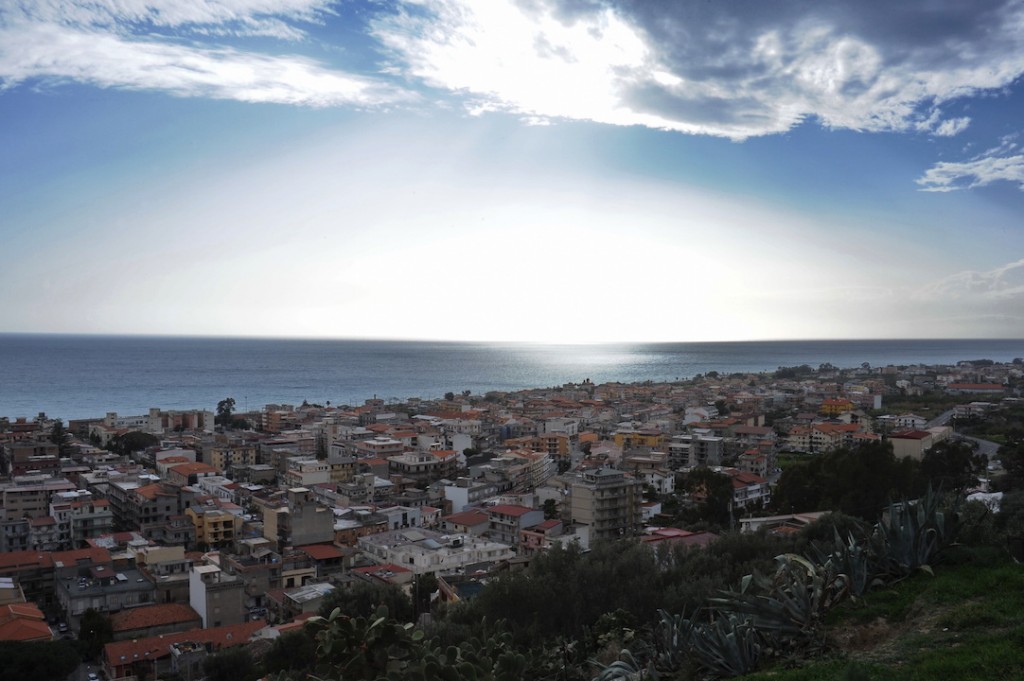
Melito Porto Salvo has experienced a rapid growth in population over the past twenty years due, in particular, to the fact that many people from the hinterland have moved down to the coast.
During the Byzantine period, it was far less significant. Back then, it was seen as a satellite settlement of the more important Pentedattilo, its outlet to the sea.
Melito (in ancient times “Melìto”) owes its name to the local river, potamòs tu Melìtu, in Greek, wadi al asal in Arabic, both meaning River of Honey and clearly referring to the abundance of honey produced in the area.
The second part of the place name, Port Salvo [lit. Safe Haven], refers, on the other hand, to the local people’s devotion to the Madonna di Porto Salvo, a maritime cult practiced, strangely enough, in an inland rural context.
Within the context of the national history of Italy, Melito Porto Salvo is remembered for two Garibaldian landings: one on the 19th of August 1860, when the victorious Garibaldi went to meet the King Victor Emanuel II, and on the 25th of August 1862, when he clashed with the Piedmontese whom he had backed for two years.
Casa Ramirez, a nineteenth-century palazzo overlooking the SS106 state highway, still bears the signs of a bombardment that occurred as the Hero of the Two Worlds [Garibaldi] slept on the lower floor of the building, today a restaurant. The reference to Porto Salvo recalls the Virgin honoured most by the seafarers and the fisherfolk who were the first to inhabit the shores when these were still threatened by the Turks.
THE NAME
The name derives from potamos tou Melitos, that is the river of honey and refers to the nearby sanctuary of Santa Maria di Porto Salvo, so called because it provided a safe haven for seafaring vessels.
TOWNLANDS AND LOCALITIES
Annà, Armà, Caredìa, Concessa, Lacco, Lembo, Marina, Musa, Musupuniti, Paese Vecchio, Pallica, Pentedattilo, Pilati, Porto Salvo, Prunella, San Leonardo, Sbarre.
HISTORY
Melito di Porto Salvo, with its population of about 12, 000 is the largest town in the Graecanic Area and stands on the southernmost tip of Calabria, at the mouth of the Melito River.
This is a seaside and agricultural town surrounded by vast citrus plantations. It was inhabited back in Romans times, but the Byzantines introduced and started cultivating bergamot here in the fifteenth century. It was the inhabitants of Pentedattilo who first founded the town which now spreads, sloping gently downwards from its hilltop historic centre, towards the Ionian Sea, where its more recent buildings stretch for about four kilometres along the coast.
According to some of the local historians, Melito was certainly inhabited in late Roman times, even if proof of this is provided only by the discovery, in the older part of the town (near the Calvario hill), of a fifth-sixth-century AD necropolis. It is supposed, furthermore, that in the late Roman period, the place was used by travellers between Reggio Calabria and Locri to change horses and rest.
According to an ancient legend, a painting of the Madonna, found on the beach, at the time of the Saracen incursions, travelled across the sea to protect the locality and its inhabitants from the Turks. On the spot where the picture was found the inhabitants built a sanctuary, which still houses the image. The construction was sponsored by Don Domenico Alberti, Marquis of Pentedattilo, lord of the Melito fiefdom. Later on, the Albertis encouraged their dependents to move from Pentedattilo down onto the more productive plain, thus giving rise to the town, which soon flourished and grew.
During the second half of the nineteenth century all Pentedattilo’s municipal and religious institutions were transferred down to Melito.
GARIBALDI AND HIS “THOUSAND”
Melito inscribed its name in the annals of the history of the Unification of Italy by welcoming Giuseppe Garibaldi and his brave “Thousand” volunteers, who, en route from Sicily, landed on the 19th of August 1860 on the beach at Rumbolo, a few hundred yards from the Porto Salvo Sanctuary. Garibaldi landed at Melito di Porto Salvo again on the 25th of August 1862, when he arrived in Calabria with his Redshirts during a military operation, aimed at freeing Rome and chasing Pope Pius IX from the city.
EXPLORING THE TOWN
Melito Porto Salvo is a seaside resort that has earned “two sails” [like “stars” for chefs in the Michelin Guide] for itself in the Guida Blu [Blue Guide] published by the Italian Environmental Association, Legambiente, and is also a member of the Comunità Montana Versante Jonico Meridionale Capo Sud, an association that promotes the towns and villages of the Graecanic Area.
The town is reached by travelling down a long road called Via Lembo [lit. Hem Road] nicknamed “Lembo d’Italia” [the Hem of Italy] because it skirts the end of the Italian peninsula. En route one comes across the spring of “l’acqua buona” [the good water], which once flowed directly from the mountains, before arriving at the town itself which is divided into two parts, Melito Alta and Melito Bassa [Upper and Lower Melito]. In the upper part we find houses standing on rather steep tarmac-covered hillocks, while, further downhill stand the village’s laboratories and shops.
Melito’s lungomare [promenade] facing the Ionian Sea, has Sicily, especially, the Mount Etna volcano, as its backdrop and, on particularly clear evenings, the view is astounding.
It is worthwhile visiting the Museo Garibaldino on the Melito Porto Salvo seafront on the exact spot where Giuseppe Garibaldi and his Thousand “Redshirts” landed way back in 1860 and 1862. The museum is divided into three parts: the outdoor section [containing the new Garibaldian stele erected here to replace the older one which has been dismantled]; the underground area which contains tombs of some of Garibaldi’s allies; and the museum proper where it is possible to view some of the weapons used, clothes belonging to Garibaldi, as well as documents and other items concerning the Thousand and the celebrated landing.
On Lungomare dei Mille [ the Seafront of the Thousand] stands the santuario dedicato alla Madonna di Porto Salvo built in 1680 at the behest of the Marquis Domenico Alberti di Pentedattilo, on the remains of an older building which, in the fourteenth century, was known as Portus Veneris [the Port of Venus]. At the centre of the main altar, we can see an imposing painting on canvas of la Madonna di Porto Salvo, portrayed as she saves a sailing ship at the mercy of the waves. Painted at the beginning of the eighteenth century by Antonio Cilea, it returns annually in procession to Pentedattilo, to reinforce the bond between Melito and the inland hamlet standing on its hand-shaped outcrop [in Greek Pentedattilo literally means Five Fingers]. The procession, held on the last Saturday of April, is the religious celebration the 12,000 inhabitants of Melito di Porto Salvo feel most keenly. This seaside town is the Graecanic Area’s most populous, because of the 1952 floods which caused the residents of the Graecanic hinterland to move down to the coast.
BERGAMOT
On arriving here, a detail that strikes visitors particularly is the unmistakable scent of bergamot, a citrus fruit that has made this town the plant’s most important production area as far back as the fifteenth century.
The bergamot is a citrus fruit classified as belonging to the Citrus Bergamia Risso species, of the Rutaceae family, the Mesperidee subfamily, the Citrus genus. The fruit is spherical in shape and each weighs an average of 200 grams; when ripe, its skin is yellow; it blooms from November to March. In Calabria it has found a perfectly suitable habitat: a narrow strip of land, a little over one hundred kilometers long, stretching from the inner slopes of the Aspromonte to the Ionian and Tyrrhenian seas, in the province of Reggio Calabria.
The cultivation of this fruit and the marketing of its essence, for the past fifty years, a rare example of agricultural entrepreneurship, have won Calabria an important place on the international market.
THE ORIGIN OF “GREEN GOLD”
The origins of bergamot are uncertain. Many claim that it is the outcome of the mutation of another species. The most plausible etymological explanation of its name seems to be the Turkish Berg-armudi, meaning “the lord’s pear tree”, due to the fruit’s pear-like shape.
The fruit and its essential oil are indispensable to the cosmetics industry; the essence is also used in pharmaceuticals because of its amazing disinfectant and antibacterial qualities. Furthermore, the essence is also availed of in the production of food, drinks and confectionary: liqueurs, tea, sweets and candies.
Continua a leggere





